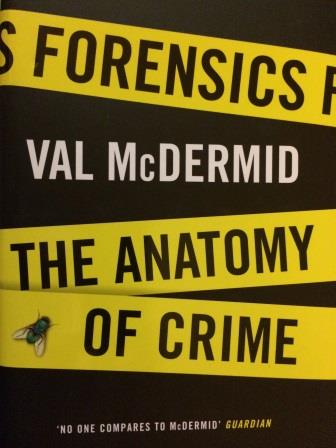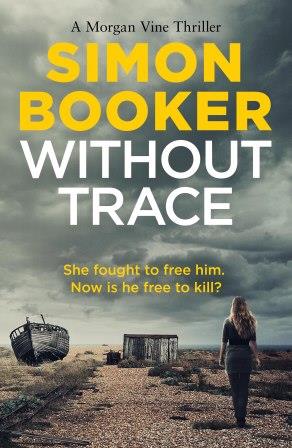
‘Every contact leaves a trace.’
This is the Locard Exchange Principle and it’s the fundamental building block of what we term ‘forensics’. In this neatly presented book, talented crime writer Val McDermid explores the development of forensic science and its applications in solving real life crime.
What’s it about?
McDermid explores the interaction of justice and evidence, from the initial crime scene to the courtroom, from the eighteenth century to up-to-the-minute scientific advances. Each chapter focuses on a different area of forensics, such as toxicology or facial reconstruction, and explores key developments within that field, including their application in particularly well-known criminal cases. Classic British crimes are touched upon – Jack the Ripper, the Brides in the Bathtub, Harold Shipman – as are influential criminalists amd scientists like Alec Jeffries and Val Tomlinson. Of course, being a writer of fiction, McDermid also mentions some of the links between fiction and forensics, with particular reference to Sherlock Holmes, who anticipated many modern forensic discoveries, and CSI, which can lead the public to expect miracles of scientists.
What’s it like?
‘More and more, scientists can discern details about a suspect’s physical appearance from their DNA: traces left at a crime scene can describe the people who were there almost as accurately as an eye witness.’
Fascinating. Easy to read. Engrossing. McDermid’s concise written style ensures information is conveyed clearly and effectively. When quoting experts in the field she frequently quotes at length, allowing the experts to explain key features of their field or crucial elements of a case. Along the way there’s some fascinating information, including the fact that eighty percent of children tested in one small sample (30 children) failed to wake up when a fire alarm was sounded at random hours of the night, even though some of them had the alarm in their bedroom.
This disturbing fact was only unearthed due to the inquisitiveness and diligence of the team investigating the fire, (while the rest of the UK was busy denouncing Mick Philpott as a vile beast, the investigators were wondering why the children weren’t woken by the fire alarms,) and this is what McDermid’s book really celebrates: the tireless dedication of numerous people in disparate fields which means that we ‘can live knowing that, if we are the victims of crime, the perpetrators will be brought to justice’.
Whether she’s examining maggots or burnt-out buildings, McDermid brings the same eye for detail to the scene and smoothly relates individual cases to the broader developments in each discipline. Her tone strikes the perfect balance between knowledgable and approachably friendly, making this feel a bit like an informative chat with a favourite teacher or lecturer.
Final thoughts
This was just as interesting and well written as I’d anticipated. McDermid effectively illuminates a range of forensic disciplines, including examining their limitations and the possibility of abuse and/or error. There’s a helpful bibliography for those who want to find out more about specific areas or cases, but I feel my interest has been quite satisfied! She concludes by reflecting on the way in which forensic evidence and the way it’s gathered is examined in the courtroom, and maintains a deeply positive attitude despite noting some problems caused by our adversarial system.
Ultimately, this is a surprisingly feel-good read, despite its inevitable accounts of death and human cruelty, probably because McDermid’s amazement and genuine appreciation of what science can achieve and what people will do is inspiring.


